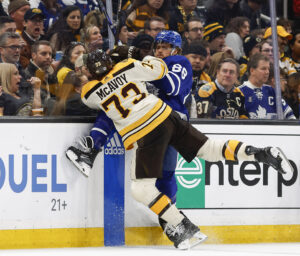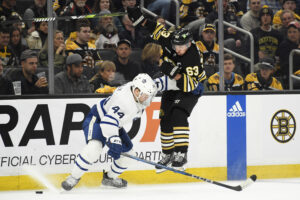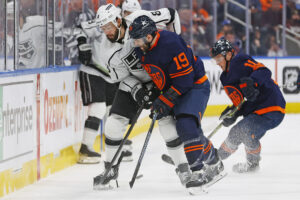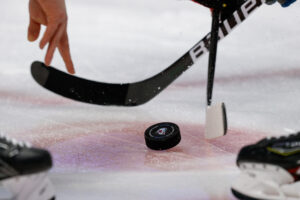Fewer Fights, and Many Fans Don’t Miss It
NHL Fighting
On July 30, ESPN published “’The new normal’: Why fighting in the NHL has dropped to historic lows,” an article by Greg Wyshynski, who highlights the statistical decline of fighting in the NHL and examines the role of fighting in hockey culture. The decline in fighting can, in part, be chalked up to rule changes. But there are more complexities to this decline than one may realize. Wyshynski does a nice job of parsing things out. That’s what players, fans, and casual viewers should do before making a snap judgment about this trend and the changing NHL culture: look at the trend from multiple angles.
The NHL can dictate rule changes, but they can’t dictate how players and fans should feel about them. While some lament the decline in fights, it seems that most players and fans welcome the change in culture—and for good reason. Any entertainment value that fights add to the game is simply not worth the physical risks and costs to players. Nor is it worth dividing a sport’s fan base.
The Times, They Are Changing
However, change is change. One fear amid change is nostalgia, that psychological creature that makes memory more bittersweet than it otherwise would be. It’s that nostalgia which fuels those who feel cheated if they don’t see a fight over the course of a game. But it’s not as simple as “more rules mean fewer fights.” There are larger social, psychological, and cultural factors that have changed the way that fans and players alike define “what is good for the game.” When I think about watching hockey as a teenager, I remember the adrenaline of seeing two players taking out their vengeance, gloves off. I admit, there have been times I was ecstatic when a fight broke out. Yet, I wasn’t disappointed then and I’m not disappointed now if a game ends without a brawl. The intensity of the game is enough. No theatrics or barbarism needed.
Fighting is Unnecessary
It’s easy to compare the debate over fighting in hockey to the debate over targeting rules in football; the rules attempt to make the game safer but may drain a little bit of entertainment value from the game (or change the way the game is played). But fighting in the NHL is different—and in a very critical way. While the act of targeting in football typically takes place in the act of tackling—something legal and foundational to the game—fighting in hockey occurs independent of play. Players literally stop playing and skating to fight. The separation of these two acts—what is essential to play and what’s extraneous, what’s accidental and what’s contrived—reveals a critical fact: fighting is unnecessary for the game. Perhaps it is part of the history of the game, but it isn’t essential to the game.
Ultimately, it’s unlikely that fighting is helping the sport much. After all, viewers have access to the UFC and to data regarding concussions. In 2019, fans don’t follow hockey for the fights. Dana White will give them that if they want it. Without as many fights in the NHL, most fans will get more of what they pay admission to see. And it will likely be less likely that young people will be restricted from playing hockey. Just take a look at NFL concussions and youth participation rates. Furthermore, instead of betting on number of fights per game, some fans will dig in deeper and see—through both sports odds and analytics—more complex skill-based layers of the game.
I can see why many enthusiasts find appeal in NHL fights. I can also appreciate how fighting is somewhat woven into the fabric of hockey culture. At the same time, when you have exciting and superbly talented players competing in an already-adrenaline-packed sport, a brief exchange of undefended jabs doesn’t sound so exciting.
Embed from Getty Images Caption: In the NHL, fighting has gone from expected to occasional






